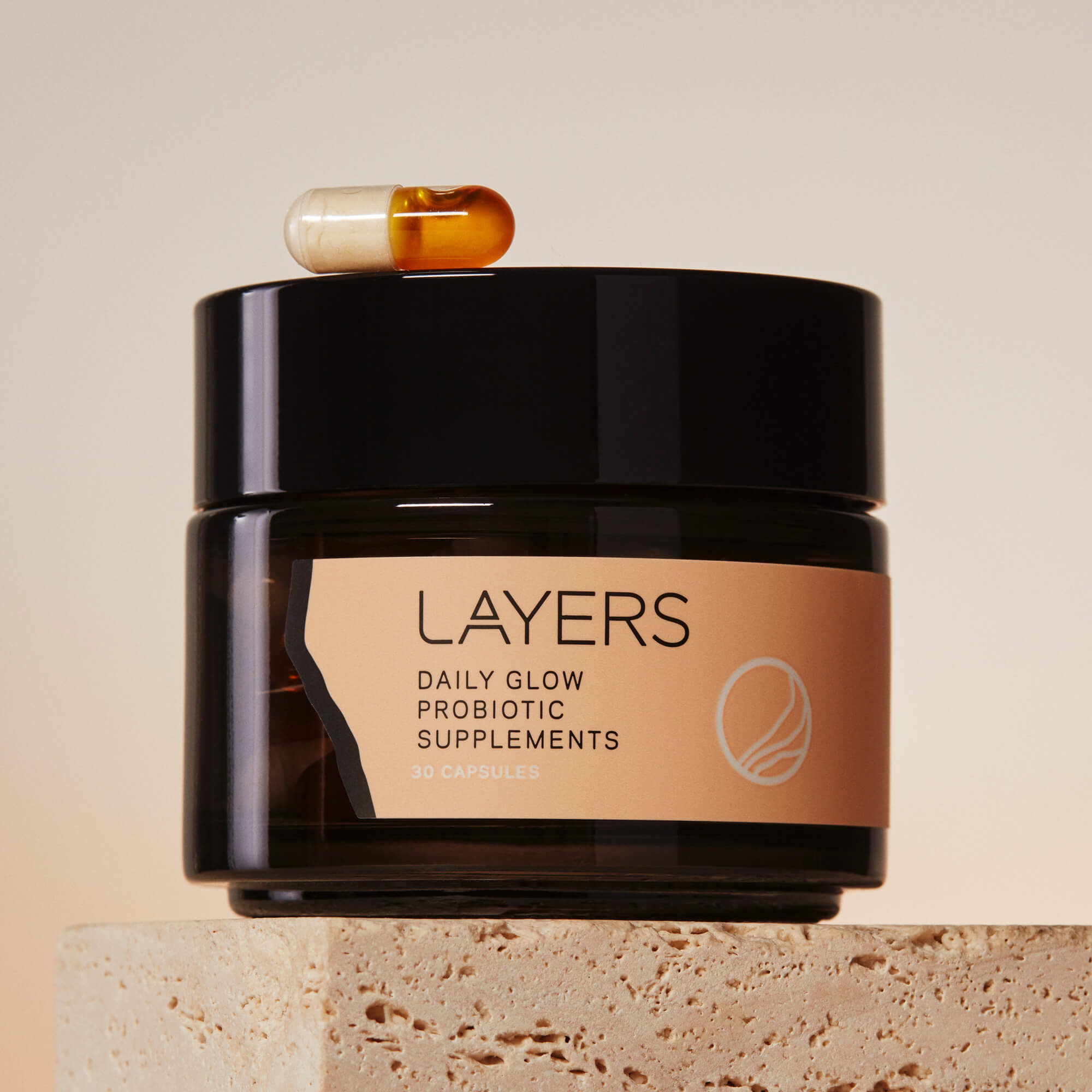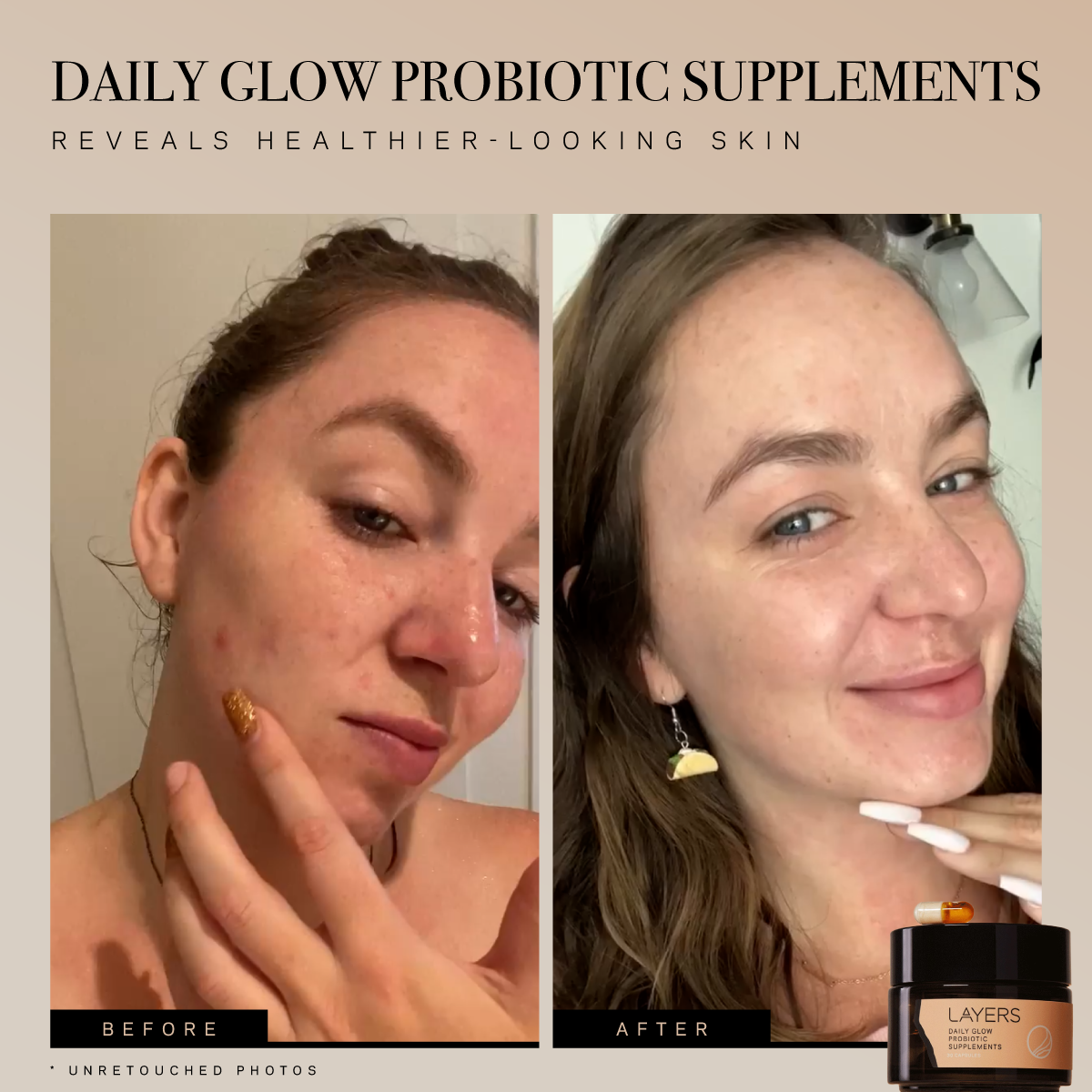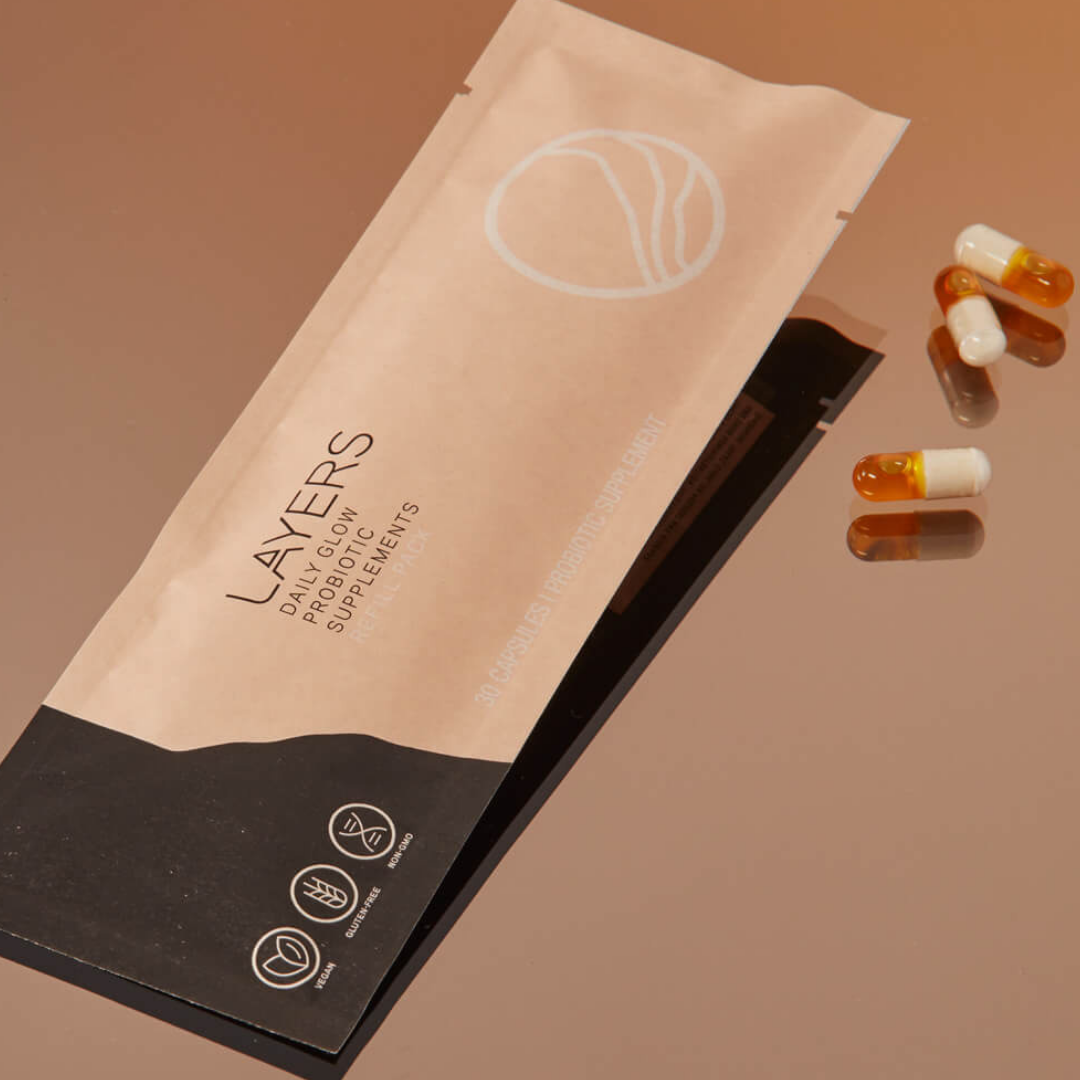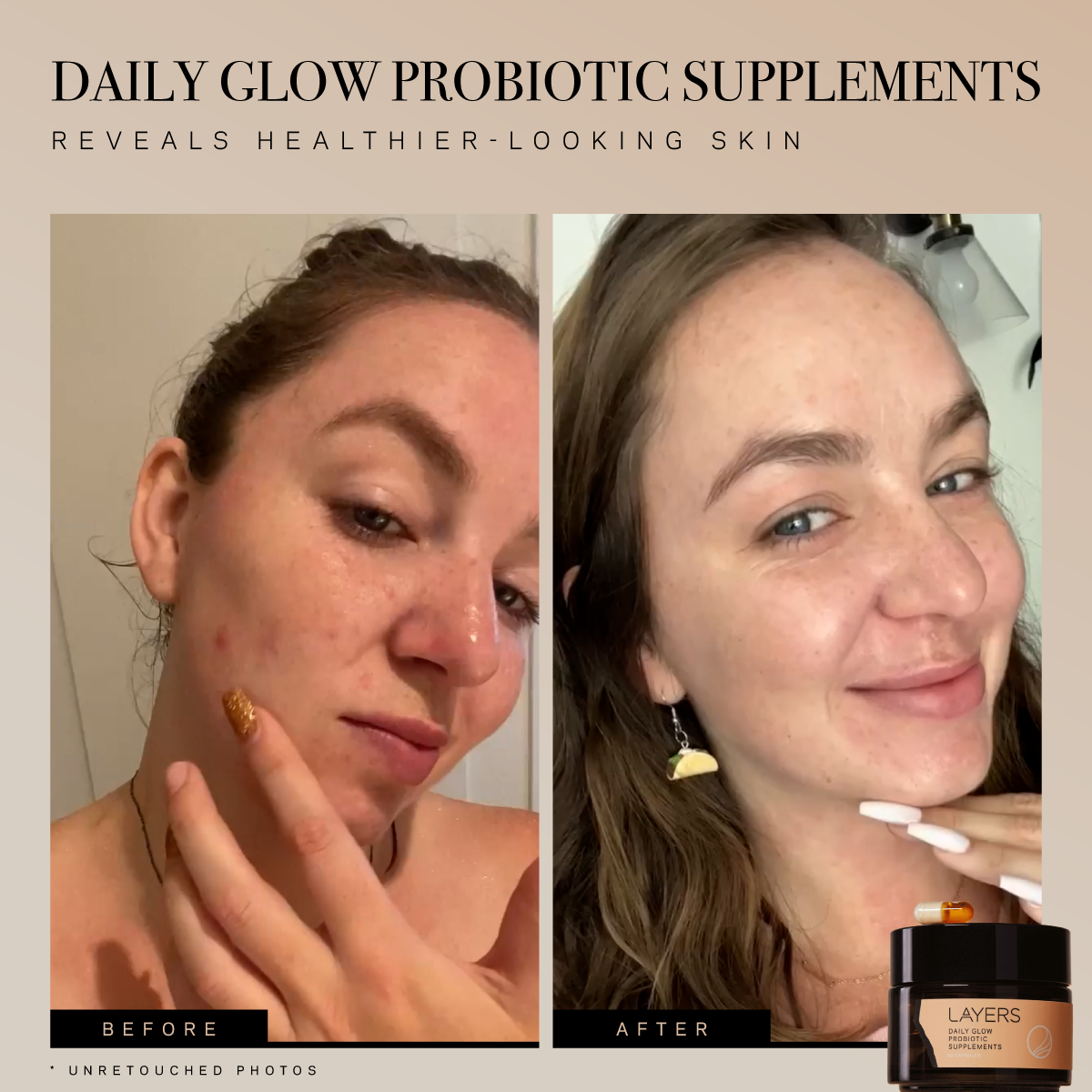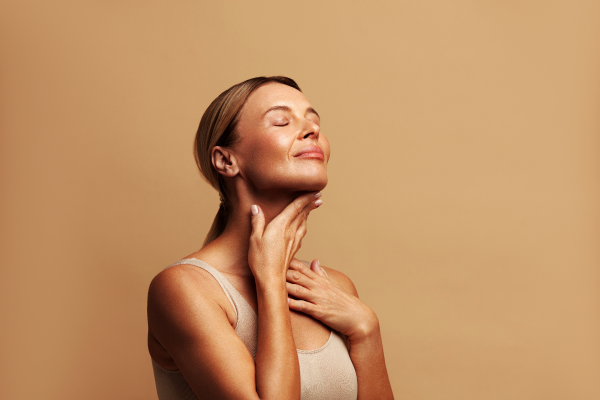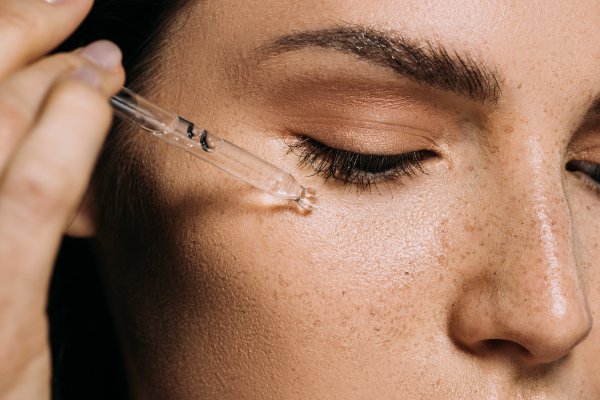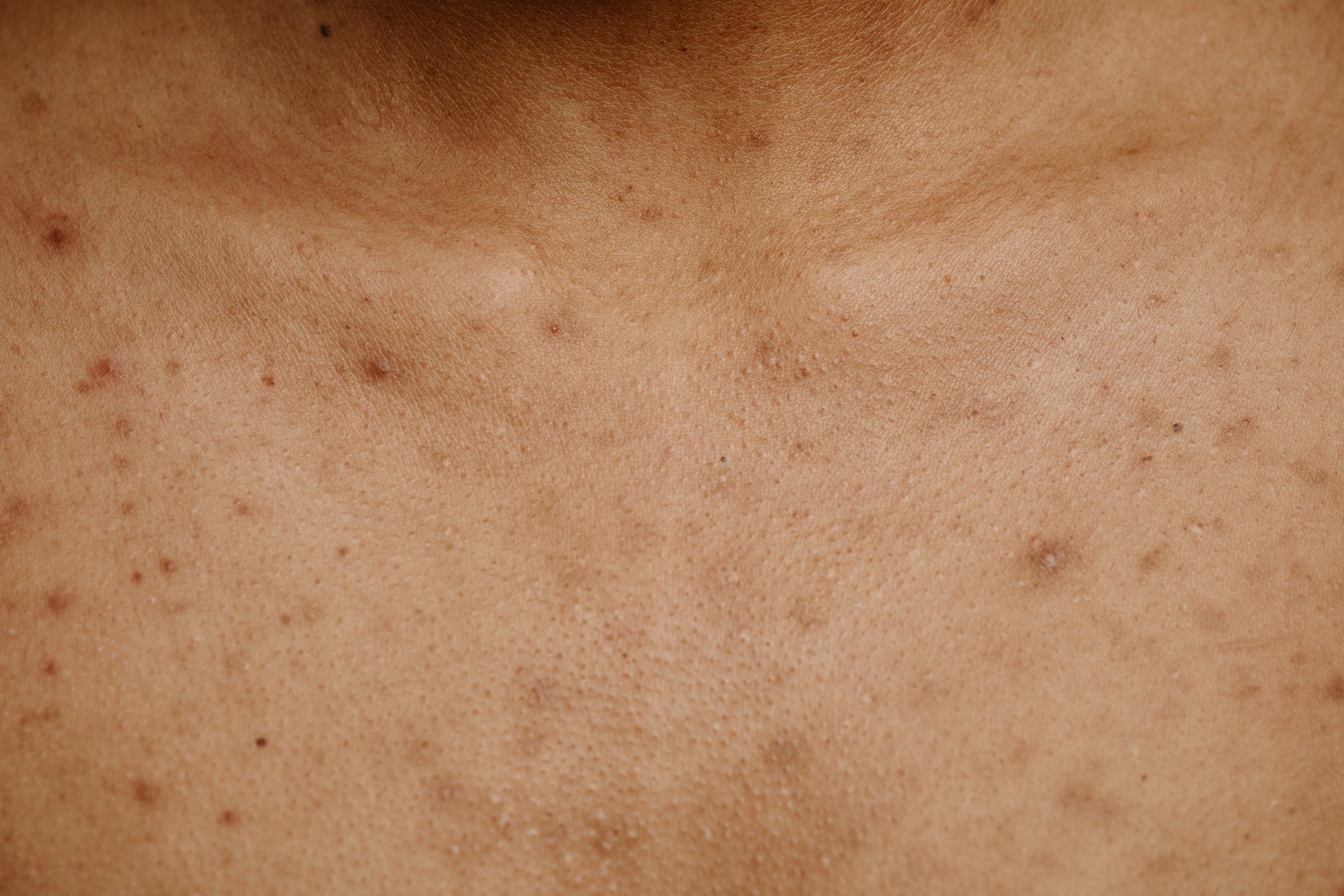Skin health is overall body health, and that’s why what we eat matters. A holistic approach to great skin starts with what’s on your plate.
When we want to tone up our abs or get rid of underarm “batwings”, we can’t just stick to doing sit-ups or side-planks. It takes a whole-body approach to see those extra pounds disappear. Seeing real change comes down to a combination of burning calories, lifting weights, and eating healthier. The same rule applies to good skin. It’s not just about which moisturizer you’re using on the exterior- it’s what you’re putting inside that counts.
HOW WHAT YOU EAT AFFECTS YOUR SKIN
You know that whole “microbiome skincare” thing we’re always talking about? Well, that’s the key concept to understanding how we get healthy skin. The microbiome is the bacterial defense system responsible for the health of our bodies, the appearance of our skin, and our immunity. When our microbiome is healthy, it’s reflected in how we look and feel.
Our diets are one of the most important factors when it comes to embracing a holistic skincare routine. Important vitamins and minerals, healthy gut bacteria, nutritional diversity, and the right amount of food for our bodies are what keep the whole system functioning optimally. The right diet means your body works better for you, and in turn, for your skin.
FOODS TO EAT FOR GOOD SKIN
No and Low Ranking Glycemic Index Foods: Foods that rank low on the glycemic index use up all of their relative amounts carbohydrates within the body and are totally absorbed by the liver. They don’t give the body more than it can use. These are the most efficient forms of carbohydrates.
Pro-Tip: Check the glycemic index for your staple foods at GlycemicIndex.com It’s a free resource courtesy of our Aussie pals at The University of Sydney.
When monitoring your GI, here’s what you need to know:
-
Low GI is 55 or less
-
Medium GI is 56–69
-
High GI is 70 or greater
Foods with no, or a negligible, glycemic index ranking:
-
Seafood
-
Beef, chicken, pork, lamb
-
Eggs
-
Nuts like almonds, cashews, pistachios, walnuts, and macadamias
-
Cooking fats like olive oil and butter
-
Herbs and spices
Foods with a low glycemic index ranking:
-
Whole grain, multigrain, rye, and sourdough breads
-
Steel cut oats
-
Fruits like apples, strawberries, apricots, peaches, plums, pears, kiwi, and tomatoes
-
Vegetables like carrots, broccoli, cauliflower, celery, and zucchini
-
Sweet potatoes, corn, yams, squash
-
Lentils, chickpeas, baked beans, butter beans, and kidney beans
-
Pasta, soba noodles, vermicelli noodles, rice noodles
-
Basmati rice, long grain, brown rice
-
Quinoa, barley, pearl couscous, buckwheat, freekeh, semolina
-
Dairy and dairy substitutes like milk, cheese, yogurt, coconut milk, soy milk, almond milk
Probiotic and Prebiotic Rich Foods: Foods that promote the growth of good gut bacteria are called prebiotics. Probiotics are the foods and supplements that provide your gut with healthy bacteria. Essentially, prebiotics are the food source for probiotics, and together, they ensure the health of your gut so your microbiome flourishes.
You can nourish your gut microflora by consuming foods that contain both probiotics and prebiotics. It’s also wise to take a probiotic regularly like our Daily Glow Supplements. In addition to containing five probiotic strains and skin-supporting ceramides, these clinically-proven probiotic supplements will visibly increase hydration and elasticity, reduce roughness and dullness, and minimize fine lines and wrinkles after just 15 days of use. In addition to probiotics, load up on healthy, friendly-gut bacteria foods.
Prebiotic foods:
-
Apples
-
Citrus
-
Mushrooms
-
Barley
-
Oats
-
Beets
-
Cranberries
-
Onions
-
Berries
-
Garlic
-
Rye
-
Blackberries
-
Chicory
-
Legumes
Probiotic foods and beverages:
-
Dairy: Yogurt, Kefir, Soft raw cheeses
-
Kombucha
-
Sauerkraut
-
Kimchi
-
Fermented Pickles
-
Miso
-
Tempeh
FOODS TO AVOID IF YOU WANT GOOD SKIN
When we say avoid, that doesn’t necessarily mean you have to eliminate these things completely. As everyone’s favorite Tiberian-era Latin writer said sometime around 30 AD, “Moderation is the mother of good health.” Ok, we looked that one up. But, even after all these years, his advice holds true. So, don’t deprive yourself, just practice moderation.
Here are the 2 main culprits that are known to trigger those skin issues we’d rather avoid:
Sugar: We’ve all heard that too much sugar is definitely a bad thing, but it helps to understand the “why”. When we consume sugar that isn’t able to be used by our bodies, that extra glucose turns into something called AGE’s. This acronym, rather coincidentally, stands for advanced glycation end products. According to a study published by the food journal Nutrients in 2020, the accumulation of AEG’s is believed to negatively affect protein function, which promotes photo-aging in the dermis layer of the skin.
The study goes on to explain the link between our bodies and what we eat:
“Food is the foundation of our lives, and diet is the main way for the body to obtain the required substances for growth and maintenance. Modern science has proven that an imbalance in nutrition and poor eating habits are important causes of skin aging.”
So, the next time you’re curled up on the couch with cramps and all you want are cookies, don’t reach for the sugar. Instead, sweeten those treats with honey and reap the added benefits of antioxidants. You can still indulge on occasion while being thoughtful of your body."
High Glycemic Index Foods: Foods that rank high on the glycemic index are high in carbohydrates. They increase the sugar levels in your bloodstream. When your body receives too much sugar, what can’t get used causes your blood sugar levels to spike.
-
White bread
-
White rice
-
Processed cereals and cereal bars
-
Cakes, cookies, and sweets containing sugar
-
Fried foods (french fries, potato chips)
-
Watermelon and pineapple
-
Sweetened dairy like flavored yogurt and milks
GUILTY PLEASURES CAN STILL MEAN GLOWING SKIN
You didn’t think we’d leave you with a bunch of rules and not end it with a little fun, did you? We would never… in fact, we’ll wrap up with a few surprises, courtesy of that handy GI Index from The University of Sydney:
-
“Alcoholic beverages contain very little carbohydrate. In fact, most wines and spirits contain virtually none. As for enjoying an occasional drink, researchers from the University of Sydney found that a pre-dinner drink tends to produce a ‘priming’ effect, flicking the switch from internal to external sources of fuel and keeping blood-glucose levels low.”
-
“Pastas of any shape and size have a fairly low GI (30 to 60). Asian noodles such as hokkein, udon and rice vermicelli also have low to intermediate GI values. Pasta should be cooked al dente (‘firm to the bite’). While al dente pasta is a low GI choice, eating too much will have a marked effect on your blood glucose. A cup of al dente pasta combined with plenty of mixed vegetables and herbs can turn into three cups of a pasta-based meal and fits easily into any adult’s daily diet.”
-
“The good news for potato lovers is that a potato salad made the day before, tossed with a vinaigrette dressing and kept in the fridge will have a much lower GI than potatoes served steaming hot from the pot. The cold storage increases the potatoes’ resistant starch content by more than a third and the acid in the vinaigrette whether you make it with lemon juice, lime juice or vinegar will slow stomach emptying.”
-
“Bread made from sprouted grains might well have a lower blood-glucose raising ability than bread made from normal flour. When grains begin to sprout, carbohydrates stored in the grain are used as the fuel source for the new shoot. Chances are that the more readily available carbs stored in the wheat grain will be used up first, thereby reducing the amount of carbs in the final product. Furthermore, if the whole kernel form of the wheat grain is retained in the finished product, it will have the desired effect of lowering the blood glucose level.”
Glowing skin, wine, and pasta? You heard it here first. All in moderation, of course, and with respect to your body’s limits, you really can have it all! Holistic skincare and microbiome support don’t have to be boring or overly restrictive.
Food is such a critical part of keeping our microbiomes healthy. The other half of the equation is ensuring that you’re using clean, probiotic skincare that helps your microbiome thrive, rather than forcing it to work harder. This holistic approach to skincare represents the latest in microbiome skincare research, and Layers is proud to be the only company offering a comprehensive, inside-out solution that supports this science. We make great skin and gut-health easy with The Perfect Pair combo pack. With two powerful probiotic skincare products (one supplement, one serum) in a single set, a balanced microbiome is simple and achievable.

